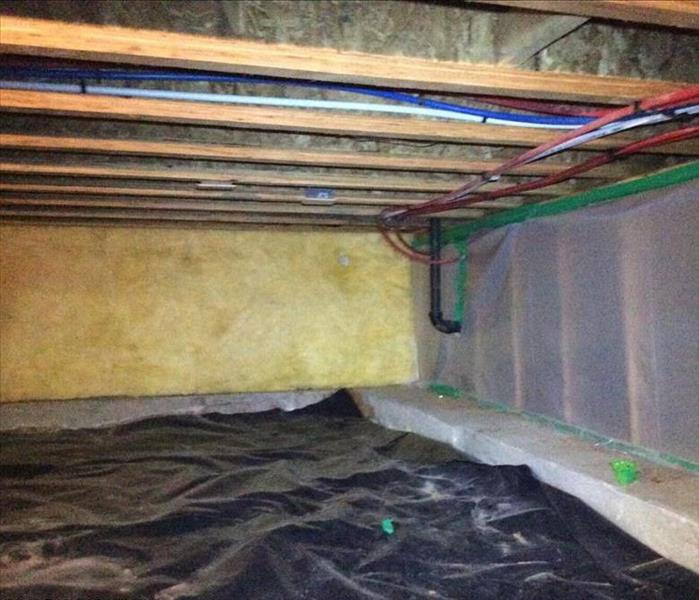Water in the crawlspaces
1/17/2019 (Permalink)
Water affects crawlspaces affecting materials in the flooring and supports. If you have a water damage in a business, the quicker you can dry the structure out the quicker less of a chance there is for mold growth and better chance to keep the doors open.
According to www.thespruce.com the give you details on how to asses the issues.
Assess If Water Is Coming From Below Grade
Imagine that you live in a very wet area. Under your house, in the crawl space or unfinished basement, is a permanently wet area. After a hard rain, the wet area's diameter expands from inches to several feet. The ground, instead of merely being muddy and spongy, begins to pool up with water. During the dry months of June to October, the pool of water shrinks, but it never completely goes away.
If this type of moisture problem sounds familiar, the water is coming up from the ground. Though seasons can affect it, it mostly transcends seasons.
If Water Is From Above Grade, It May Be a Plumbing Issue
The water might be attributed to a leaking water supply or drain pipes. If a water-related action happens within the house and more water develops in the crawl space, that is your likely culprit. Water-related actions might be when someone takes a shower; when the dishwasher runs; when a toilet flushes; or when a bathtub drains.
Water Plus Lack of Light Creates Mold
With excessive water in the crawl space, you have the related problem of mold. Mold loves to grow in places that have moisture and lack of light. Both conditions perfectly describe a crawl space.
Mold will grow on the piers, joists, ducts, and other hard surfaces. But mold also grows on soft materials, such as fiberglass insulation and on the plastic vapor barrier. These surfaces are difficult to repair because the mold cannot be cleaned off. The only solution is to remove the material and replace it.
If you have a fire, water, asbestos, or mold issue give SERVPRO a call today (208) 523-5365.





 24/7 Emergency Service
24/7 Emergency Service
